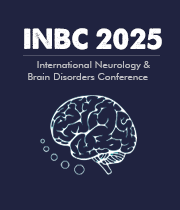Title : The Trigeminal Lympho-Glymphatic Coupling System (TLGCS): A brainstem bottleneck linking clearance failure, chronic pain, and neurodegeneration
Abstract:
Background: Neurodegenerative and chronic pain disorders such as Alzheimer’s disease (AD), Parkinson’s disease (PD), and trigeminal neuralgia (TN) are increasingly associated with impaired cerebrospinal fluid (CSF) clearance. The glymphatic system—mediated by astrocytic aquaporin-4 (AQP4) channels—plays a vital role in CSF–interstitial fluid exchange and waste removal. However, the interface between peripheral sensory systems and central glymphatic mechanisms remains underexplored.
Objective: To propose and define the Trigeminal Lympho-Glymphatic Coupling System (TLGCS) as a novel pathophysiological model linking trigeminal root entry zone (REZ) dysfunction with impaired brain clearance, chronic pain, and neurodegeneration.
Method: A comprehensive neuroanatomical and pathophysiological review was conducted, integrating current evidence on glymphatic dynamics, glial cell behavior, trigeminal neurovascular compression, astrocytic AQP4 channel modulation, and sensory afferent signaling. We analyzed overlapping biomarkers, imaging patterns, and histopathological features from existing literature on AD, PD, and TN.
Result: We identify the trigeminal REZ as a bottleneck where glymphatic flow, vascular compression, and sensory processing converge. Dysfunction at this site may lead to glial activation, ion dysregulation, excitotoxicity, and clearance failure. This coupling failure provides a mechanistic explanation for the coexistence of chronic pain and neurodegeneration. The TLGCS framework offers a unified model for diagnostics, biomarker development, and novel imaging and therapeutic strategies targeting brainstem clearance mechanisms.



